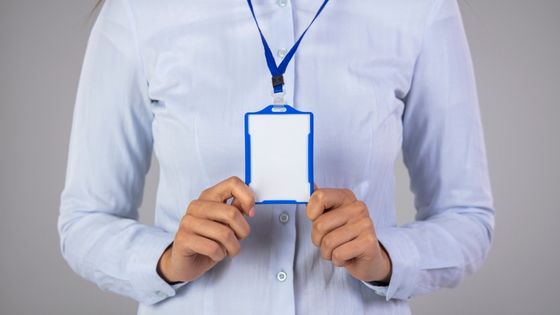As a business owner, you tend to keep your best foot forward – from ensuring employee satisfaction to retaining your clients. But it is easy to be baffled with the responsibilities you have, that you may forget some things. For starters, how does an ID card design sound?


It may be the last thing on your mind, but it impacts your business more than you thought. Especially if you are running a company where you don’t remember the name of every employee you have, getting ID cards becomes more imperative than ever.
Why Getting An ID Card Is Crucial
If you have a company with a large number of employees, you can never afford to put your security at stake. Everyday hundreds of them are entering or leaving your premises, but without an ID card, tracking their movement is almost impossible.
So, getting an ID card becomes a necessity for a business like yours. Typically, an ID card carries details like the employee’s name, code, position held, contact information, company’s logo, and its details. This basic information has the power to keep your workers safe in the most unexpected situations. It helps with identification purposes, along with a slew of other benefits.
Furthermore, getting anything done and getting it done properly are two different things. If you’re on the verge of ordering ID cards for your company, just know this: THE DESIGN OF YOUR ID CARD WILL DETERMINE ITS FATE.
Simply getting cheaply printed ID cards or trusting an unknown printing service would compromise the cards’ purpose. They may commit printing errors or produce cards with flimsy plastic, causing them to break.
So, how will you ensure that the type of company ID Card you’re getting is the right one? Let us dig deeper.
ID Card Design Hacks: What To Do & What To Skip
When you first see your ID card, it should tell you exactly what your company’s vision is. Big corporations don’t just focus on the accuracy of the details to be included in the ID cards, but also go the extra mile for the design.
Just like business cards and visitor’s cards, ID cards do play a part in brand recall. When outsiders take a look at the ID cards, it impacts their judgement of your company. Thus, an ID card printing can either “make or break” your business.
This is why it is suggested that the ID cards be personalised. They don’t have to be dull information carriers; instead, they should reflect your brand’s identity in a single glance. You can get a design made by your in-house graphic designer or choose templates from an online digital printing store and select ID card design.
Yet, even if personalisation is not your focus, you must still choose a card manufacturer with experience running personalisation centres. This will make sure that the limitations of personalisation are carefully taken into account as early as the design stage.
1. Details Matter –
It is important to strike a chord with the design of your ID cards while paying attention to the useful information. Include the employee’s name, age, address, title, employee number, and any other pertinent information.
Place your logo so that it goes well with the way your ID card is made. If there is little space on the card, consider double-sided printing or making a watermark of the logo. Also, mention your company name at the top of the card.
2. Balance colour combination –
Here, you will have to be careful considering the design aspect. Don’t go too creative with the cards as there may be a congestion of elements.
Furthermore, when having the cards printed, using contrast colours for your logo is not always the best approach. Try to embrace as little eccentricity as possible to ensure consistency in the design.
3. Incorporate less design elements –
While designing the ID card, try to be less innovative. The reason for this is that the marketing component in ID card printing is much less than other business utilities and purely helps in identification purposes.
If you play with the design elements more, the details will end up confusing the user. Thus, place the photo in the centre, and then go ahead with other information.
4. Choose the sides –
Make optimum use of single or double sided printing – whichever suits you. If all the important details can be easily accommodated on the front side, leave the back one for your company’s details. If not, shift details like contact number, company’s address and others on the back side.
Pro Tip: Also remember to print your company’s logo on the lanyards for the ID cards. This will help in easy identification of the company and create a sense of unity among the employees.
5. Pick the perfect finish –
It all lies in the “Look and feel” of your customized ID card. You can go with a glossy print if you want your cards to look professional and easily noticeable. Most companies go with glossy print as it provides a distinctive sheen to the card.
A matte finish is also an option. It renders “class” with a simplistic and slightly-velvety touch to the cards. Businesses with B2B models who are more into client dealings choose matte finishes for their brands. Nevertheless, there is no hard and fast rule for this, and you can use it at your will.
Bottom Line
Before creating your ID card design, make a list of the information that will be printed on them. The card’s design should be centred on this information. A straightforward approach to include the employee’s photo and name on an ID card saves time beforehand, and gives you the flexibility of adding further details according to the space left.









